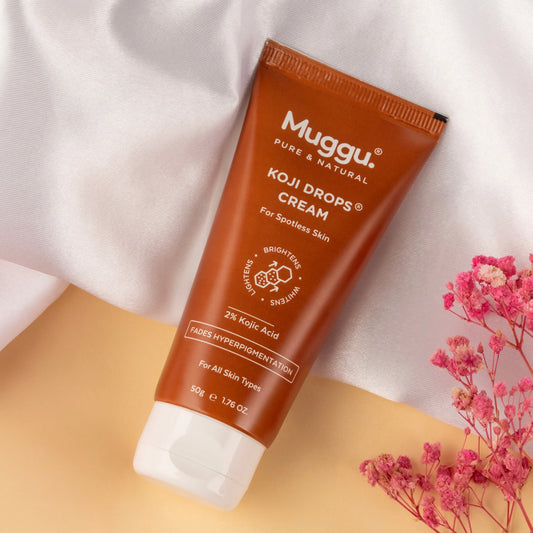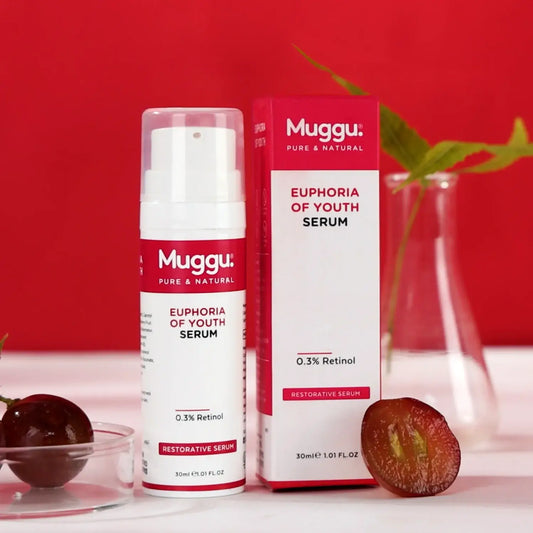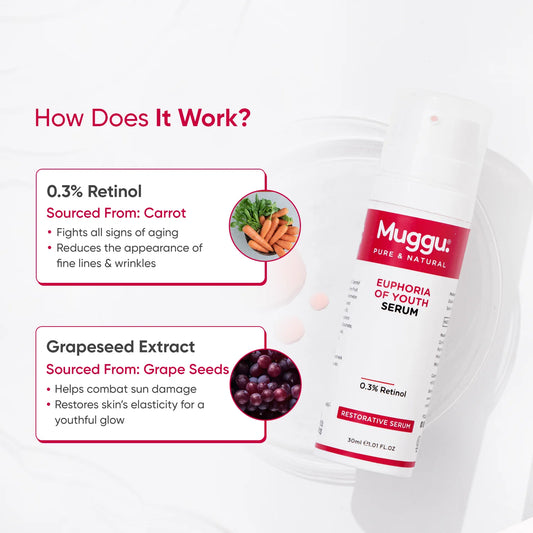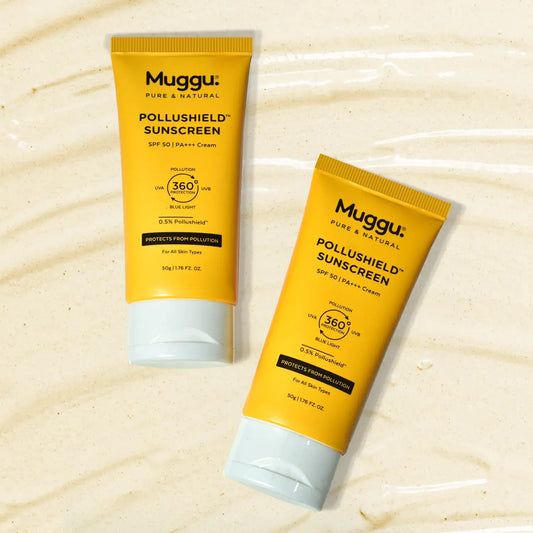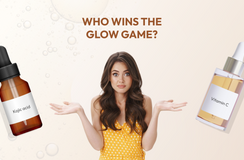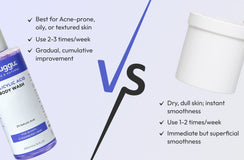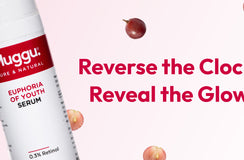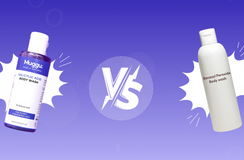If you’ve ever scanned the ingredients of a brightening skincare product, chances are you've spotted kojic acid. It might not sound fancy, but this little ingredient is a big deal when it comes to fading dark spots and evening out your skin tone.
But what makes kojic acid such a superstar? Why does your skin tone even out with regular use, and how does it actually work?
Let’s break it down in simple terms. We’re going deep like skin deep to see how kojic acid cream works at the cellular level to tackle hyperpigmentation. But before that let’s quickly learn about melanin - the real MVP of your skin’s color.
What is Melanin?
Melanin is the natural pigment that determines the color of your skin, hair, and eyes. It’s produced by specialized skin cells called melanocytes, which live in the bottom layer of the epidermis (aka the top layer of your skin).
Here’s the basic flow of melanin production, or melanogenesis:
-
Melanocytes detect a trigger (like UV exposure, hormones, inflammation, or injury).
-
They respond by activating an enzyme called tyrosinase.
-
Tyrosinase starts converting the amino acid tyrosine into dopaquinone, which eventually becomes melanin.
-
The melanin is packed into little parcels called melanosomes.
-
These melanosomes travel to neighboring skin cells (keratinocytes), distributing pigment and giving skin its shade.
Sounds like everything’s running smoothly, right? But sometimes, your skin goes into overdrive and makes more pigment than it needs.
What happens next?
When your skin just doesn’t know when to quit, and produces excess melanin, it causes hyperpigmentation. An acne scar, a little too much sun, or a hormonal shift can send melanocytes into melanin-overproduction mode. The result?
This is where kojic acid steps in like a chill supervisor, asking tyrosinase to take a breather.
READ MORE: How Kojic Acid Cream for Pigmentation Works at the Cellular Level?
Kojic Acid: An Overview
Kojic acid may sound fancy, but it’s actually a natural compound made by certain types of fungi and also pops up when foods like rice or soy sauce are fermented. It’s been a star ingredient in skincare for one BIG reason - it helps fade dark spots and even out skin tone.
Its secret? Kojic acid slows down melanin production and you know that melanin is what gives your skin (and spots!) their color.
So, How Does It Actually Work?
Alright, let’s break it down.
Your skin makes melanin using an enzyme called tyrosinase. Think of tyrosinase like the “on” switch in your skin’s pigment factory. When it’s active, melanin starts getting made, especially after sun exposure, skin injuries, or inflammation.
Kojic acid comes in like a clever little hack and says, “Let’s not overdo it.” Here’s what it does:
It grabs onto the copper in tyrosinase (which it needs to function) and slows it down.
That means less melanin is produced.
It also prevents too much pigment from moving up to the surface of your skin.
Basically, it helps reduce new dark spots while softening the ones you already have.
It’s Not Just a One-Trick Ingredient
Besides slowing melanin, kojic acid is also a solid antioxidant. That means it helps protect your skin from things like pollution, UV damage, and stress, all of which can trigger more pigment.
It:
-
Calms inflammation (which can cause dark marks).
-
Protects your skin from damage.
-
Supports an overall glow-up.
So, it’s not just brightening, it’s also being your skin’s little shield.
What About Dead Skin Cells?
Good question. Kojic acid doesn’t exfoliate your skin on its own, but it’s often mixed with ingredients that do, like glycolic acid, niacinamide, or retinol.
Why does that help?
Because while kojic acid is preventing new pigment, you still need to get rid of the old stuff. Exfoliating helps those pigmented cells rise to the surface and shed faster. Translation: you see results sooner.
Consistency Is Queen (Sorry, No Overnight Magic)
Here’s the truth: kojic acid isn’t an instant glow-up. Your skin needs time — usually around 4 to 8 weeks — to show results.
Why? Because:
-
Your skin naturally renews itself every few weeks.
-
Pigment fades slowly.
-
If you stop using it too soon, those dark spots might just come back.
So if you’re not seeing change in a few days, don’t panic. Stick with it. Take progress pics every couple of weeks, you’ll be surprised.
Sensitive Skin? Here’s the Heads-Up
Kojic acid is generally gentle, but in higher concentrations (above 1–2%), it can sometimes be irritating.
You might feel:
How to keep your skin happy:
-
Start low and slow.
-
Always patch test first.
-
Pair it with soothing ingredients like hyaluronic acid, ceramides, or allantoin.
-
And wear SPF. Every. Single. Day.
Seriously, using a brightening product without sunscreen is like trying to dry off while standing in the rain.
Bonus: How Kojic Acid Stacks Up
Coming up next: a quick comparison of kojic acid with other brightening ingredients like vitamin C, arbutin, and licorice root — so you can pick your glow squad wisely. Want me to keep going with that?
|
Ingredient
|
Mode of Action
|
Bonus Perks
|
Best For
|
| Kojic Acid |
Inhibits tyrosinase |
Antioxidant, antifungal |
Sun spots, PIH, uneven tone |
| Vitamin C |
Reduces oxidized melanin |
Brightens, boosts collagen |
Dullness, antioxidant defense |
| Niacinamide |
Blocks melanosome transfer |
Strengthens barrier |
Redness, blotchy tone |
| Alpha Arbutin |
Inhibits tyrosinase |
Gentler alternative |
Sensitive skin |
| Licorice Extract |
Inhibits tyrosinase + anti-inflammatory |
Soothes skin |
Melasma, PIH |
Kojic acid holds its ground as a well-researched, effective pigment regulator, especially when used alongside these ingredients.
Who Should Use Kojic Acid Cream?
Kojic acid cream is a great fit if you’re dealing with:
It’s suitable for most skin types, but sensitive skin folks should tread gently and look for creams with buffered formulas or added soothing agents.
The Ideal Kojic Acid Routine
Here’s how you can build a simple, effective routine around kojic acid:
AM Routine
PM Routine
Add exfoliants or retinoids 2-3x/week only if your skin can handle it, and never pair everything at once.
In a Nutshell
Kojic acid doesn’t just lighten dark spots, it works on a much deeper, smarter level:
✅ It blocks tyrosinase, reducing melanin at the source
✅ It helps prevent future pigmentation
✅ It offers antioxidant protection
✅ It works best with consistent use
✅ And it loves a little skincare sidekick action
So if you’re dreaming of even-toned, radiant skin, kojic acid cream is a science-backed, dermatologist-loved option worth committing to.
Ready to Get Glowing?
Pigmentation can be stubborn, but so is science. With the right product, a bit of patience, and daily sunscreen (yes, we’ll keep nagging), your skin can absolutely get to that smooth, even glow.
Because real radiance? It happens at the cellular level, and kojic acid knows exactly how to spark it. ✨
